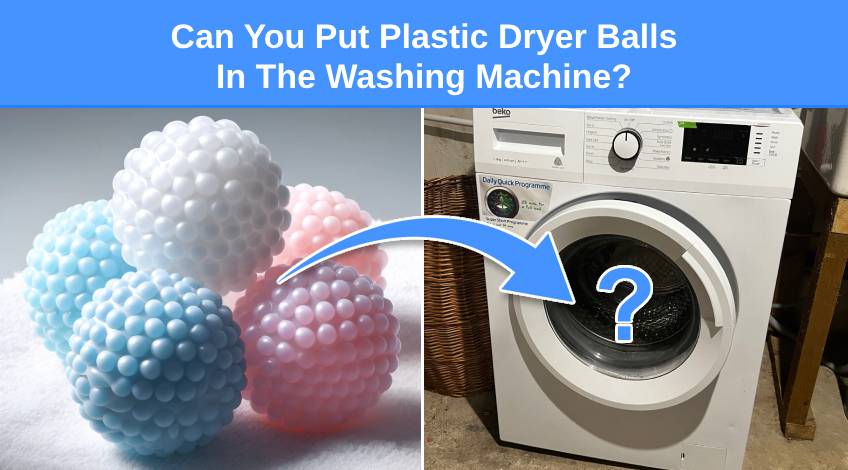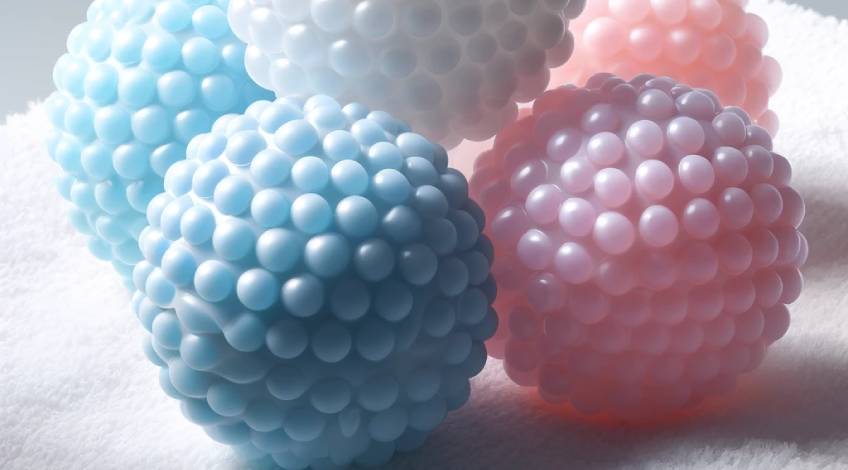
Can You Put Plastic Dryer Balls In The Washing Machine?
It’s okay to put plastic dryer balls in the washing machine, even if they are meant for the dryer, as they are crafted to endure heat. However, ensure that the material they are made from is suitable for machine washing.
Be aware that being in water for too long might weaken the plastic, making it brittle. Yet, this option is generally better than wool dryer balls, with silicone being the ideal choice.
Using plastic dryer balls in your washing machine might seem straightforward, but there are intriguing details you might not have considered.
Keep reading to learn not only the benefits but also the potential risks and best practices when using plastic dryer balls in your washing machine.
What Are The Benefits Of Using Plastic Dryer Balls In The Washing Machine?

Dryer balls made of wool are softer and won’t harm your washing machine, but using plastic dryer balls has its benefits too.
Most plastic dryer balls, depending on the material they are made of, are tough enough for the washing machine. They handle heat well since they are designed for dryers, and they don’t break down in water. However, wool dryer balls, while gentle on the machine, might break down when washed.
In the washer, plastic dryer balls help lessen static and protect fibres from damage. You could even use them instead of fabric softener. The balls move the clothes around, softening them and preventing them from clumping together, which can cut down on wrinkles and improve the wash.
Note: You might think about putting plastic dryer balls into the washing machine for cleaning purposes. However, washing them by hand is often easier due to their size and the amount of water they need.
What Are The Risks Of Using Plastic Dryer Balls In The Washer?

While using plastic balls in the laundry is possible, they pose a risk of catching on and damaging delicate fabrics by getting stuck.
The hard plastic may also pull and snag threads. They may also get stuck in small openings, causing mechanical blockages. This might result in costly repairs.
It’s also important to note that you shouldn’t put them alone in the washing machine to lower the risk of damaging your appliance. They may get stuck in small openings, causing mechanical blockages which might result in costly repairs.
Additionally, the harsh detergents used in laundry can cause the dryer balls to wear out faster.
When Should You Put Plastic Dryer Balls In The Washer?

Always use plastic dryer balls with a full load of laundry, which will act as a cushion for the balls. It’s best to avoid using them in small loads to lessen the chance of damage.
Consider having a separate set of dryer balls for your washing machine and tumble dryer. If you use the same set in both, their efficiency in the dryer may decrease, as they will be wet when used.
SEE ALSO: What Are Laundry Balls? (and how they work)
Frequently Asked Questions
Plastic dryer balls can replace fabric softener. They move the clothes around in the washing machine, softening them and preventing clumping, which helps to reduce wrinkles and improve the wash.
The downsides of dryer balls include the potential to damage delicate fabrics, as the hard plastic may catch on and pull threads. They can also cause mechanical blockages in the washing machine if they get stuck in small openings.
The difference between wool dryer balls and plastic dryer balls is that wool dryer balls are softer, making them gentler on your washing machine and clothes. However, they might break down when washed. Plastic dryer balls are tougher, handle heat well, and are less likely to break down in water.
To clean plastic dryer balls, it’s often easier to wash them by hand rather than in the washing machine due to their size and the amount of water they need.




